Praetorian Guard: Roman Elite Unit Assigned To Protect But Also Involved In Confinement, Execution, Spying And Threats
A. Sutherland - AncientPages.com - Every ruler wants his bodyguard to protect him against political opponents, people's wrath, and personal enemies.
No wonder Emperor Augustus (predecessor of Julius Cesar), strengthening his Empire, came to the same conclusion - he wanted to be protected.
Decor Fragment of an Arc de Triomphe 51-52 AD: The Emperor's Imperial Guard, The Praetorians, featured in a relief with an eagle grasping a thunderbolt through its claws, in reference, to the Roman interpretatio graeca form of Jupiter. Image credit: Jérémy-Günther-Heinz Jähnick/Wikipedia
We know that the reign of Augustus initiated an era of relative peace known as the Pax Romana. He accomplished a lot for the Empire.
He reformed the Roman system of taxation, developed networks of roads with an official courier system, established a standing army, created official police and fire-fighting services for Rome, and rebuilt much of the city during his reign.
He also decided to introduce an armed unit for his personal use.
As early as the second century BC, special units watched famous Roman leaders such as Marc Antony, Scipio Africanus, and Lucius Cornelius Sulla. Later, Julius Caesar recruited his tenth legion as personal security.
Praetorian Guard As We Know It Introduced By Augustus
However, the Praetorian Guard, as we know it, didn't appear until shortly after Augustus became Rome's first emperor in 27 BC
When Augustus decided to strengthen his authority and feel much more secure by preventing assassins from murdering him, Brutus and his companions stabbed Gaius Julius Caesar in the Roman Senate in 44 BC.
The Praetorian Guard was at first divided, three cohorts stationed close to Rome, and six more outside the capital at various imperial residences in Italy, to be deployed immediately in the event of civil unrest.
In her book "The Praetorian Guard: A History of Rome's Elite Special Forces," Sandra Bingham wrote that the Praetorians were "organized into nine cohorts of 1,000 men each [partly horse and partly foot], they initially were dispersed throughout the city and nearby areas in an attempt to avoid the appearance of having so many armed men in the capital.
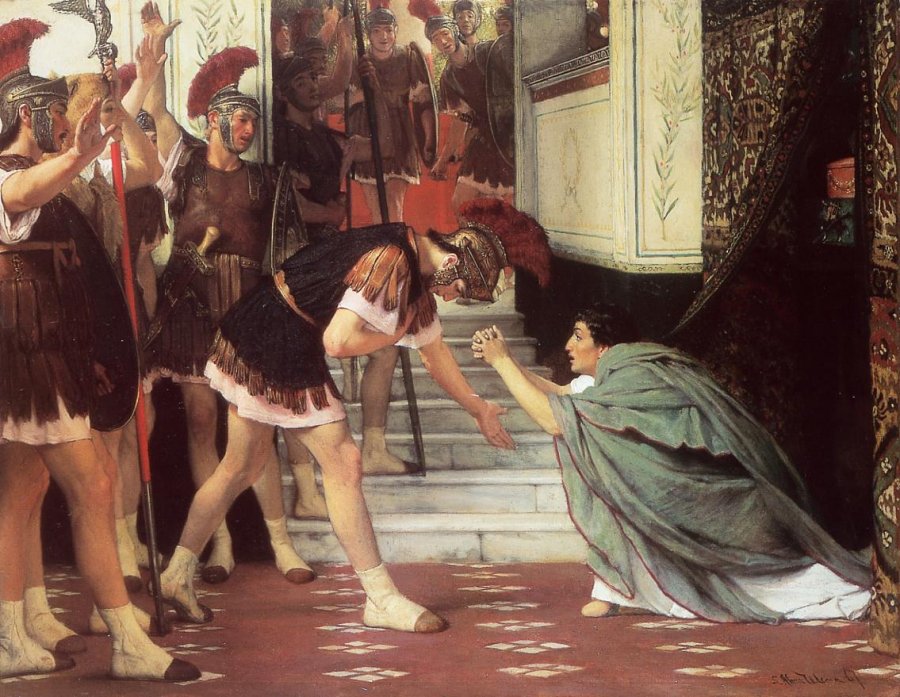
Proclaiming Claudius Emperor, by Lawrence Alma-Tadema, oil on canvas, 1867. Image credit: Lawrence Alma-Tadema (1836–1912)/Wikipedia
Since this was the first time soldiers had been stationed in Rome, Augustus was careful not to offend the citizens by clearly advertising how he had come to power and maintained his principate.
In reality, however, the Praetorians increasingly would have been visible to those in the city because of their growing involvement in its administration, and, before long, all of the cohorts were brought into the capital to facilitate the coordination of their duties."
Praetorians – Elite Unit of the perfect soldiers
The Praetorian Guard - an elite unit of soldiers - was one of the most distinctive features of Roman imperial rule. They were equipped with the latest weapons and underwent challenging training in ancient martial arts. Only the best, most deserving, and physically-trained soldiers were accepted into the Guard.
The Guard had a prestigious character and was responsible for numerous administrative duties and specialized military tasks. These men (recruited entirely from Italians) were responsible for the safety of the Roman emperor and his family and were supposed to demonstrate the ruler's power.
The Praetorians were well rewarded for their loyalty and paid more than the rest of the army. They had better working conditions, and their close contact with the emperor made them the most privileged group in the military.
Additionally, Augustus reduced their length of service by a quarter (twelve years, as opposed to the initial sixteen in the Roman legions to encourage their loyalty.
Praetorians involved in murder and intrigue
The Praetorians were the men-at-arms who protected; they were also involved in incidents linked with a murder of an emperor. As their influence grew, the Praetorians also played a crucial role in the intrigue and double-crossing that blighted imperial Rome.
They soon became the most powerful body in the state. According to ancient records, they frequently elevated or deposed emperors. Members of the Praetorians were involved in the assassination of Gaius in AD 41; they also played a significant role in the accessions of Claudius, Nero, and others.
The Praetorians also assisted firefighters in Rome and helped in security matters at the games, in theaters, at festivals, and during engineering works in the capital.
After the Praetorian Guard murdered Caligula, they significantly contributed to the imperial appointment of Tiberius Claudius Caesar at the age of fifty in 41 AD. Thus, Claudius was the first emperor raised to the throne by the Praetorian Guard.
This elite military unit existed for over 300 years; they were bodyguards of the emperors and guaranteed protection and security in Rome, but as we see, it wasn't the only role they played in the Empire. It frequently happened that the Praetorians put one of their favorites on the throne. It was a bad combination of murder and military power that one day had to end.
As Bingham writes, "perhaps the most sinister of the duties assigned to the guard was the confinement, and often the execution, of those whom the emperor considered a risk." There are numerous examples of using Praetorians to detain individuals believed to be a threat or those who had been charged and waited for a trial.
In several instances, the intimidating presence of the soldiers was enough to force the individual to commit suicide. Such an act removed the responsibility from the emperor and allowed him to claim that he would have interceded on behalf of the accused and been lenient towards him if only he had not killed himself.
" Members of the imperial family also were spied upon by those guardsmen who were assigned to them, ostensibly for protection and prestige, but who were reporting back to their superiors the conversations and events they witnessed. The Praetorians in these cases served both as a sign of honor, granted by the emperor, and as a means of control…."
At the battle of Milvian Bridge in AD 312, Constantine finally disbanded the Praetorian Guard for good. He considered the unit more dangerous than protective. In its place, he instituted the 'Scholae Palatinae,' the so-called 'palace guard,' consisting of Germans and Gauls; these men were devoted to their ruler.
Written by – A. Sutherland AncientPages.com Staff Writer
Updated on October 20, 2022
Copyright © AncientPages.com All rights reserved. This material may not be published, broadcast, rewritten or redistributed in whole or part without the express written permission of AncientPages.com
Expand for referencesReferences:
Sumner G. Roman Army Wars of the Empire
Southern P. The Roman Army
More From Ancient Pages
-
 New Attempt To Solve The Easter Island Mystery – What Did Rapa Nui Look Like Before Europeans Arrived?
Archaeology | Sep 20, 2017
New Attempt To Solve The Easter Island Mystery – What Did Rapa Nui Look Like Before Europeans Arrived?
Archaeology | Sep 20, 2017 -
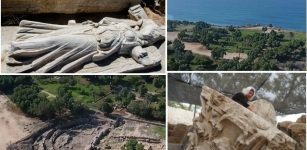 Huge 2,000-Year-Old Roman Basilica Discovered In Israel May Have Been Built By Herod The Great
Archaeology | Jul 29, 2021
Huge 2,000-Year-Old Roman Basilica Discovered In Israel May Have Been Built By Herod The Great
Archaeology | Jul 29, 2021 -
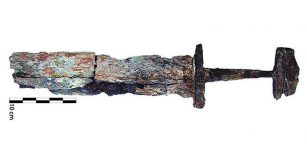 Viking Sword Found In Patara May Have Belonged To A Varangian Guard
Archaeology | Nov 22, 2018
Viking Sword Found In Patara May Have Belonged To A Varangian Guard
Archaeology | Nov 22, 2018 -
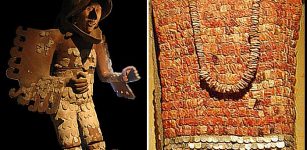 Fearsome Aztec Eagle And Jaguar Warriors Of Mesoamerica
Featured Stories | Sep 14, 2023
Fearsome Aztec Eagle And Jaguar Warriors Of Mesoamerica
Featured Stories | Sep 14, 2023 -
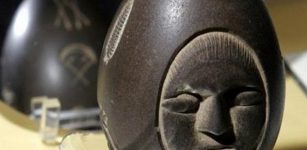 America’s Ancient “Mystery Stone” Remains An Unexplained Puzzle
Artifacts | Apr 17, 2014
America’s Ancient “Mystery Stone” Remains An Unexplained Puzzle
Artifacts | Apr 17, 2014 -
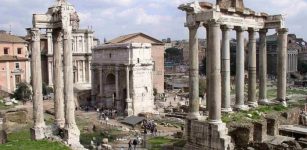 Mystery Of Ancient Roman Concrete That Still Stands Strong – Has A 2,000-Year-Old Engineering Puzzle Been Solved?
Ancient Technology | Jul 5, 2017
Mystery Of Ancient Roman Concrete That Still Stands Strong – Has A 2,000-Year-Old Engineering Puzzle Been Solved?
Ancient Technology | Jul 5, 2017 -
 God Loki – Trickster, Elusive And Fascinating Member Of The Norse Pantheon
Featured Stories | Sep 14, 2017
God Loki – Trickster, Elusive And Fascinating Member Of The Norse Pantheon
Featured Stories | Sep 14, 2017 -
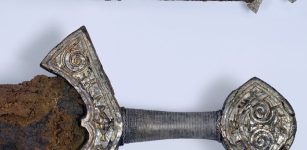 Mystery Of The Langeid Viking Sword And Its Undeciphered ‘Magical’ Inscriptions
Artifacts | Jun 4, 2022
Mystery Of The Langeid Viking Sword And Its Undeciphered ‘Magical’ Inscriptions
Artifacts | Jun 4, 2022 -
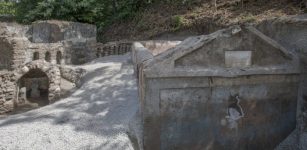 Unusual And Well-Preserved Skeleton Discovered In Ancient Pompeii Sheds New Light On The Cultural Life Of The City
Archaeology | Aug 18, 2021
Unusual And Well-Preserved Skeleton Discovered In Ancient Pompeii Sheds New Light On The Cultural Life Of The City
Archaeology | Aug 18, 2021 -
 Horses Skinfaxi And Hrimfaxi – Bringers Of Light And Darkness To Earth In Norse Mythology
Featured Stories | Dec 16, 2017
Horses Skinfaxi And Hrimfaxi – Bringers Of Light And Darkness To Earth In Norse Mythology
Featured Stories | Dec 16, 2017 -
 Who Built The Mysterious Huapalcalco Pyramid – Mexico’s Smallest Pyramid?
Featured Stories | Mar 29, 2018
Who Built The Mysterious Huapalcalco Pyramid – Mexico’s Smallest Pyramid?
Featured Stories | Mar 29, 2018 -
 Byzantine Greek Inscription Of Psalms 86 Found In Hyrcania
Archaeology | Sep 29, 2023
Byzantine Greek Inscription Of Psalms 86 Found In Hyrcania
Archaeology | Sep 29, 2023 -
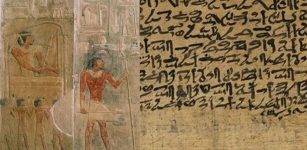 Secrets Of Maxims Of Ptahhotep – Ancient Egyptian Wisdom Is Still Relevant Today
Artifacts | Mar 10, 2018
Secrets Of Maxims Of Ptahhotep – Ancient Egyptian Wisdom Is Still Relevant Today
Artifacts | Mar 10, 2018 -
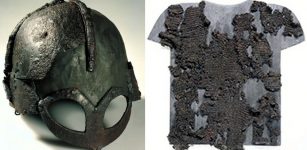 Unique Gjermundbu Helmet – Why Has Only One Viking Age Helmet Been Found In Scandinavia?
Artifacts | Mar 23, 2018
Unique Gjermundbu Helmet – Why Has Only One Viking Age Helmet Been Found In Scandinavia?
Artifacts | Mar 23, 2018 -
 Codex Gigas – The Devil’s Bible – Ancient Secrets Of The World’s Largest Book
Artifacts | Jun 15, 2014
Codex Gigas – The Devil’s Bible – Ancient Secrets Of The World’s Largest Book
Artifacts | Jun 15, 2014 -
 Mystery Of Human Evolution – What Can Ancient Genes Tell Us About Who We Are?
Archaeology | Jun 2, 2022
Mystery Of Human Evolution – What Can Ancient Genes Tell Us About Who We Are?
Archaeology | Jun 2, 2022 -
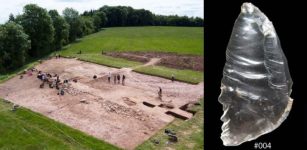 Prehistoric Brits Used Rare Rock Crystals To Mark Burial Sites – New Study
Archaeology | Aug 10, 2022
Prehistoric Brits Used Rare Rock Crystals To Mark Burial Sites – New Study
Archaeology | Aug 10, 2022 -
 Two Inca Measurement Systems Calculated By Polish Architect
Archaeology | Nov 4, 2020
Two Inca Measurement Systems Calculated By Polish Architect
Archaeology | Nov 4, 2020 -
 Longvek – Ancient Historical City That Sheds Light On Cambodia’s ‘Dark Age’
Archaeology | Jan 13, 2016
Longvek – Ancient Historical City That Sheds Light On Cambodia’s ‘Dark Age’
Archaeology | Jan 13, 2016 -
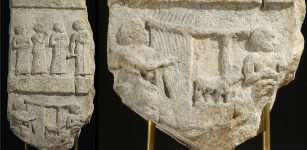 Mesopotamian Music Stele That Commemorates Gudea King Of Lagash In Temple Foundation Ceremony
Artifacts | Dec 12, 2016
Mesopotamian Music Stele That Commemorates Gudea King Of Lagash In Temple Foundation Ceremony
Artifacts | Dec 12, 2016


